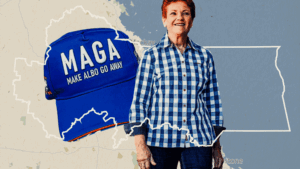
For over 70 years, the scientific community has been puzzled by the Sun’s corona, its outer atmosphere, which reaches temperatures of millions of degrees Celsius, while the surface remains relatively cooler at around 5,500 °C (10,000 °F). Now, a breakthrough study by an international team of scientists has shed light on this longstanding enigma.
The team reports the first clear evidence of small-scale torsional Alfvén waves permeating the Sun’s corona. These waves, which travel through magnetic fields and twist as they move, play a crucial role in transporting plasma upwards. Until this discovery, only larger, isolated Alfvén waves had been observed, typically in conjunction with solar flares.
Revolutionary Observations
The discovery was facilitated by the US National Science Foundation’s Daniel K. Inouye Solar Telescope in Hawaii, the world’s most powerful solar telescope. This instrument’s high-resolution imagery allowed scientists to detect the precise motion of solar plasma, which is composed of charged particles. By tracking the movement of superheated iron, which emits bluer light signatures when approaching Earth and redder when receding, researchers could isolate the torsional Alfvén waves.
“This discovery ends a protracted search for these waves that has its origins in the 1940s,” stated physicist Richard Morton from Northumbria University in the UK. “We’ve finally been able to directly observe these torsional motions twisting the magnetic field lines back and forth in the corona.”
Understanding the Sun’s Mechanisms
The presence of these small-scale waves offers a plausible explanation for how the Sun’s corona reaches its extreme temperatures. The waves facilitate the movement of super-hot plasma from the Sun’s surface to the corona, where it releases energy. This understanding is critical for comprehending solar winds, which emanate from the Sun and can impact satellite networks and power systems on Earth.
“The movement of plasma in the Sun’s corona is dominated by swaying motions,” explained Morton. “These mask the torsional motions, so I had to develop a way of removing the swaying to find the twisting.”
Implications for Space Weather
The findings not only enhance our understanding of the Sun’s internal processes but also have significant implications for space weather forecasting. By accurately modeling these processes, scientists can improve predictions of geomagnetic storms, potentially providing more warning time for events that could affect Earth.
Small-scale torsional Alfvén waves may contribute to the forces needed to propel solar winds beyond the Sun’s gravitational influence, as well as help the corona achieve its intense heat. This discovery marks a pivotal step in solar physics and opens new avenues for future research.
Future Research Directions
Now that these small Alfvén waves have been detected, future studies can delve deeper into their mechanisms and distributions within the corona. This will allow for more rigorous testing and investigation of other theories regarding the Sun’s behavior.
“This research provides essential validation for the range of theoretical models that describe how Alfvén wave turbulence powers the solar atmosphere,” Morton noted. “Having direct observations finally allows us to test these models against reality.”
The announcement comes as a significant advancement in the field of solar physics, promising to refine our understanding of the Sun and its influence on the solar system. As scientists continue to explore these phenomena, the potential for new insights into space weather and its effects on Earth grows ever more promising.







